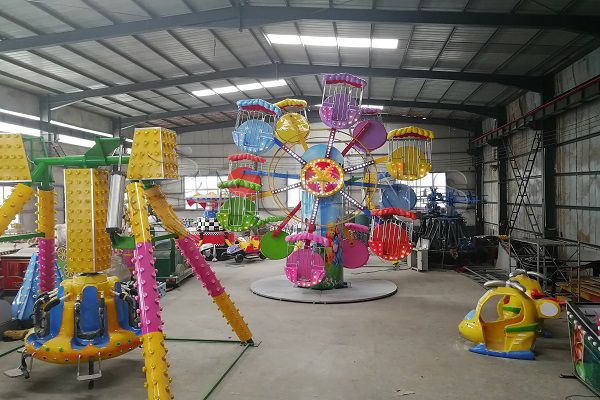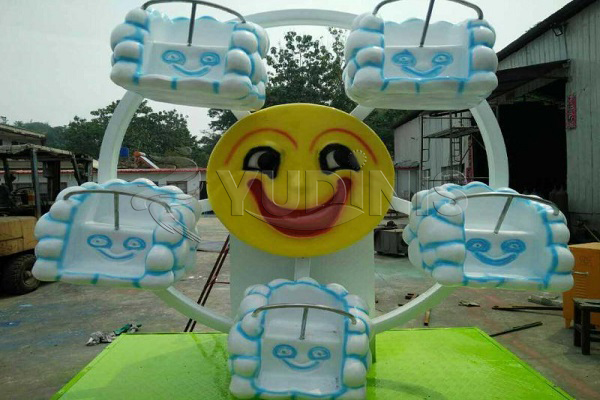Buying a small Ferris wheel for sale can be a great investment for amusement parks, family entertainment centers, shopping malls, or even rental businesses. These compact rides attract families and children with their colorful design, safe structure, and affordable operation. However, like any amusement ride, small Ferris wheels can face some common issues during installation, operation, or daily use.
In this article, we will discuss the most frequent problems buyers encounter and provide practical solutions to keep your ride safe, reliable, and profitable.
1. Installation Challenges
Problem: Many buyers underestimate the complexity of assembling a small Ferris wheel for sale. Incorrect installation may lead to unstable operation or even safety hazards.
Solution:
Always follow the manufacturer’s installation manual carefully.
Hire professional technicians or request factory engineers to guide the installation process.
Make sure the ground foundation is firm and level before fixing the base structure.

2. Power Supply Issues
Problem: The ride may not operate smoothly if the local power supply is unstable or incompatible with the equipment’s voltage requirements.
Solution:
Confirm the correct voltage and frequency (e.g., 380V/220V, 50Hz/60Hz) before installation.
Use a high-quality power stabilizer to prevent sudden voltage fluctuations.
Consult your manufacturer to customize the motor and control system for your local standards.
3. Noise and Vibration
Problem: Customers sometimes complain about loud noises or excessive vibration during operation.
Solution:
Check the gearbox and bearings for lubrication and wear.
Tighten bolts and joints in the main structure.
Schedule routine maintenance every 3–6 months to replace worn-out mechanical parts.
4. Cabin Wear and Tear
Problem: Over time, cabins made of FRP (fiberglass reinforced plastic) may develop fading, cracks, or loose safety bars.
Solution:
Clean cabins regularly to prevent fading from UV exposure.
Apply protective paint or gel coating for long-term durability.
Replace safety bars, seat belts, or door locks immediately if they show signs of damage.
5. Electrical System Failures
Problem: Control panels or LED lighting systems may stop working due to wiring problems or water damage.
Solution:
Use waterproof electrical boxes, especially for outdoor installations.
Inspect wiring connections frequently.
Keep spare fuses, relays, and LED strips on hand for quick replacement.
6. Passenger Safety Concerns
Problem: Some operators worry about whether small Ferris wheels are truly safe for children.
Solution:
Choose equipment from certified manufacturers that meet CE, ISO, or ASTM standards.
Train staff to supervise passengers and enforce height/weight limits.
Perform daily safety checks before operation, including seat belts, cabin doors, and emergency brakes.

7. After-Sales Service and Spare Parts
Problem: Delays in getting spare parts or lack of technical support can affect business operations.
Solution:
Work with manufacturers that provide a 1–2 year warranty and lifetime technical support.
Ask in advance about the availability of spare parts like motors, bearings, and LED lights.
Keep a small stock of critical components for quick repairs.
Conclusion
A small Ferris wheel kids amusement ride is a smart investment for any amusement business, but only when managed properly. By understanding the common problems and applying the right solutions, you can maximize safety, extend the ride’s lifespan, and ensure steady profits.
If you are considering buying a small Ferris wheel for sale, choose a reliable manufacturer who offers full installation guidance, warranty service, and ongoing technical support. That way, you can enjoy peace of mind while your customers enjoy the ride. Click here for more detailed information: https://www.outdoorparkrides.com/small-ferris-wheel-for-sale/
Leave a Reply